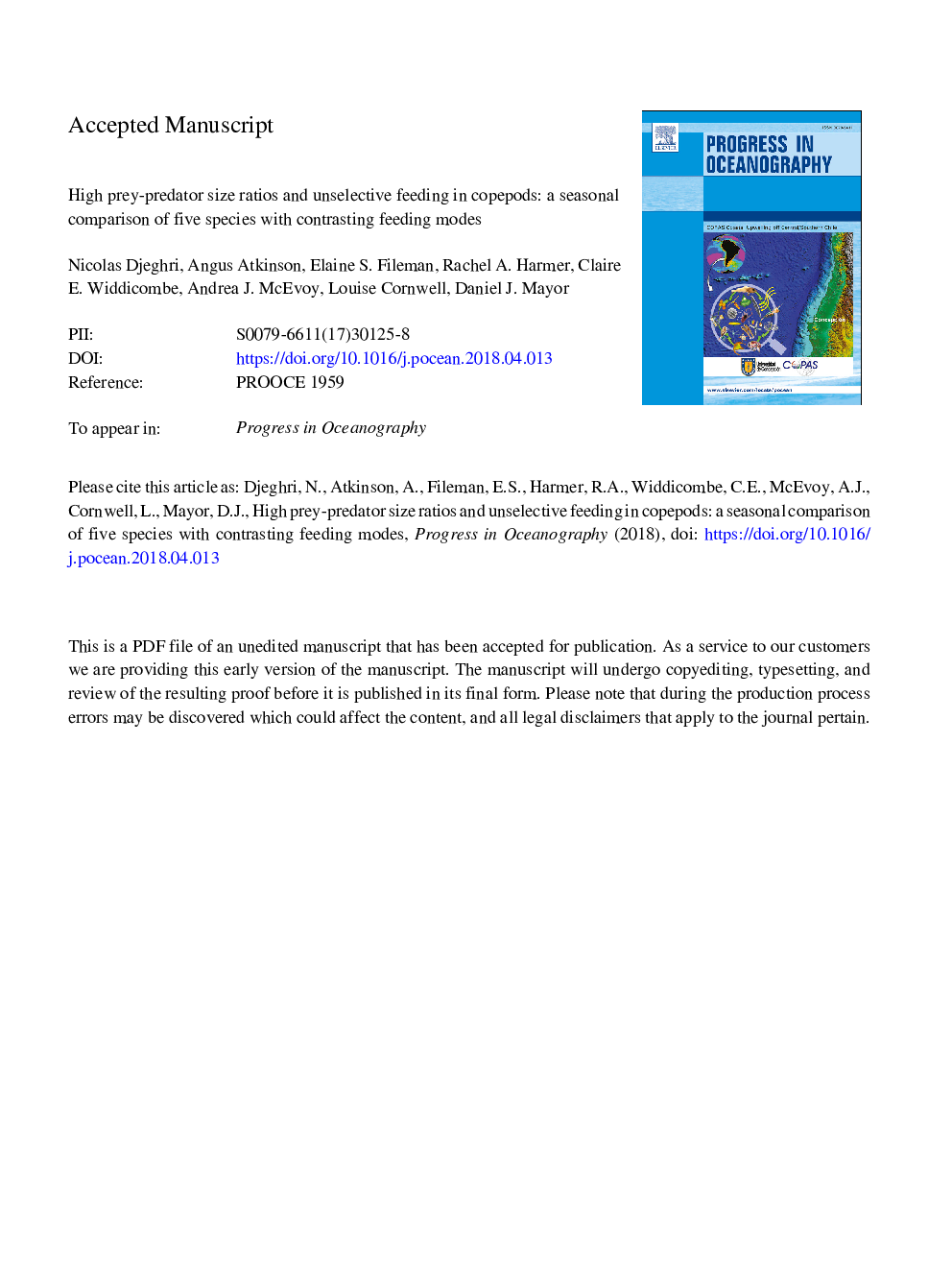| کد مقاله | کد نشریه | سال انتشار | مقاله انگلیسی | نسخه تمام متن |
|---|---|---|---|---|
| 8886614 | 1627893 | 2018 | 44 صفحه PDF | دانلود رایگان |
عنوان انگلیسی مقاله ISI
High prey-predator size ratios and unselective feeding in copepods: A seasonal comparison of five species with contrasting feeding modes
ترجمه فارسی عنوان
نسبت سایز شکار شکارچیان و تغذیه نامنظم در کپوپدها: مقایسه فصلی پنج گونه با حالت های متفاوتی برای
دانلود مقاله + سفارش ترجمه
دانلود مقاله ISI انگلیسی
رایگان برای ایرانیان
کلمات کلیدی
موضوعات مرتبط
مهندسی و علوم پایه
علوم زمین و سیارات
زمین شناسی
چکیده انگلیسی
There has been an upsurge of interest in trait-based approaches to zooplankton, modelling the seasonal changes in the feeding modes of zooplankton in relation to phytoplankton traits such as size or motility. We examined this link at two English Channel plankton monitoring sites south of Plymouth (L4 and E1). At L4 there was a general transition from diatoms in spring to motile microplankton in summer and autumn, but this was not mirrored in the succession of copepod feeding traits; for example the ambushing Oithona similis dominated during the spring diatom bloom. At nearby E1 we measured seasonality of food and grazers, finding strong variation between 2014 and 2015 but overall low mesozooplankton biomass (median 4.5 mg C mâ3). We also made a seasonal grazing study of five copepods with contrasting feeding modes (Calanus helgolandicus, Centropages typicus, Acartia clausi, Pseudocalanus elongatus and Oithona similis), counting the larger prey items from the natural seston. All species of copepod fed on all food types and differences between their diets were only subtle; the overriding driver of diet was the composition of the prey field. Even the smaller copepods fed on copepod nauplii at significant rates, supporting previous suggestions of the importance of intra-guild predation. All copepods, including O. similis, were capable of tackling extremely long (>500 µm) diatom chains at clearance rates comparable to those on ciliates. Maximum observed prey:predator length ratios ranged from 0.12 (C. helgolandicus) up to 0.52 (O. similis). Unselective feeding behaviour and the ability to remove highly elongated cells have implications for how copepod feeding is represented in ecological and biogeochemical models.
ناشر
Database: Elsevier - ScienceDirect (ساینس دایرکت)
Journal: Progress in Oceanography - Volume 165, JulyâAugust 2018, Pages 63-74
Journal: Progress in Oceanography - Volume 165, JulyâAugust 2018, Pages 63-74
نویسندگان
Nicolas Djeghri, Angus Atkinson, Elaine S. Fileman, Rachel A. Harmer, Claire E. Widdicombe, Andrea J. McEvoy, Louise Cornwell, Daniel J. Mayor,
